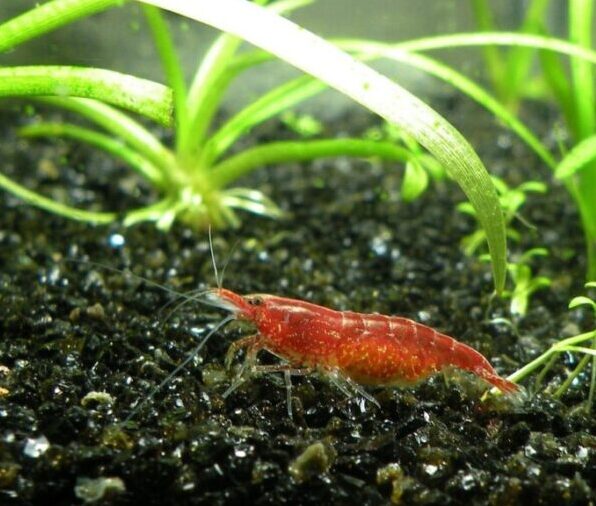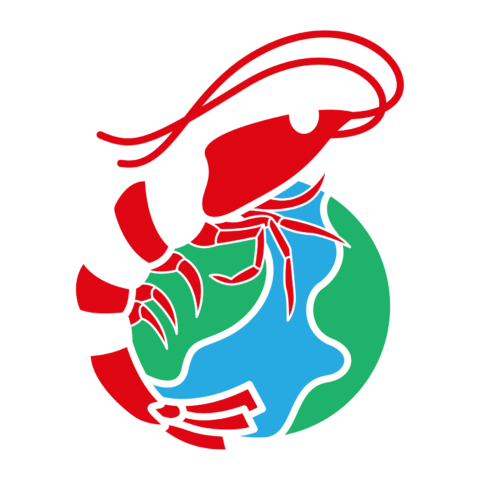When freshwater shrimps lay eggs, they carry their eggs underneath their belly until the eggs hatch. The mother shrimps fan the eggs to provide oxygen and prevent mold from growing. After the eggs have hatched, they sometimes go into hiding to shade off their exoskeleton (molt).
Freshwater shrimp don’t always die after laying eggs. After the eggs have hatched to molt, mother shrimp sometimes simply go into hiding, often perceived dead. They’re not dead; they’re just resting. But if they do die, that’s usually due to stress, intoxication, or molting problems.
Keep reading as I’ll discuss a few factors related to freshwater shrimp deaths, including parasite infestation, overfeeding/underfeeding, or intoxication in the rest of this article. I’ll also discuss what happens when they lay eggs and why they become more vulnerable afterward.

Possible Causes of Freshwater Shrimp Deaths
If you noticed your female shrimp dying after laying eggs, note that several issues could cause them to die. The most common issues are as follows:
Your Shrimp Might Have Problems During Molting
Sometimes shrimps lack some vital elements in their parameters. They don’t grow well when this happens and may not shade a healthy exoskeleton. Also, they develop a noticeable white band-like solid substance between the head and the body.
Usually, the exoskeleton breaks from above the head, allowing the shrimp to come out. The ring prevents apparent breakage and makes it difficult for the shrimp to come out of its exoskeleton and probably die.
If your tank has more male than female shrimp, the male behavior can stress females. For instance, if a female goes into hiding after laying eggs, males will move around looking for her. During this phase, the females are weak and vulnerable.
Watch this YouTube video for more information on having more males than female freshwater shrimps in one tank can contribute to female deaths:
To prevent imbalances and deaths among your shrimp, I recommend monitoring and controlling the male-to-female population ratio.
You Might Have Been Underfeeding or Overfeeding Your Shrimp
An underfed female shrimp may die after laying eggs while hiding during molting. Also, overfeeding your pets isn’t a good practice because:
- Decomposing food produces nitrite and ammonia, which can harm your pets.
- The decomposition process uses oxygen, reducing the available dissolved oxygen In the water and can kill your pets.
- The leftover food can block your filter and reduce its effectiveness which may stress the pets.
It would be helpful to feed your pets food they can finish up in about two minutes once or twice daily. Also, you can starve them occasionally for a day.
The Shrimp May Have Been Exposed to Pesticides
Shrimp are very sensitive to toxins. You might expose them to toxins by accident when:
- You buy an aquatic plant treated with pesticides.
- You spray your dogs and cats with pesticides to kill pests.
- You’re fumigating your house to kill household pests.
It’s advisable to take precautions while fumigating your household or treating other pets to avoid intoxicating your shrimp.
Also, I’d advise quarantining your new aquatic plants to sterilize them and prevent your shrimp from intoxication.
Your Shrimp Were Infected by Diseases or Parasites
Another most likely cause of your shrimps’ deaths could be diseases or Infestation from parasites such as:
- Dragonfly nymphs: These are predators that hunt and eat shrimp; you can physically remove them from your tank.
- Hydras: They’re parasites that prey on shrimps, killing them with poisonous stings and eating them. Hydras are food to fish, and you can quickly get rid of them by adding fish to your tank.
- Vorticella: They live on the shrimp and look like white fungus. Vorticella may not initially harm your shrimp, but they may multiply and fall into gills where they can cause suffocation.
You can free your pets from Vorticella using this Aquarium Pharmaceuticals Aquarium Salt (available on Amazon.com). Aquarium salt is one of the most effective remedies against vorticella and is safe for your pets. This product promotes healthy gill function and reduces stress and electrolyte loss.
Most of these parasites thrive on poor sanitation in a tank. Maintaining good sanitation and regularly changing your tank’s water can help prevent Infestations.
What Happens When Shrimp Lay Eggs?
Shrimps don’t lay eggs and leave them to hatch on their own or hold them until they hatch and give birth as most fish do. After having laid, they stay with their eggs until they hatch.
Unlike most fish, freshwater shrimp don’t give birth after hatching eggs or lay and let them hatch independently.
Shrimps carry eggs under their abdomen for 1–2 weeks until they hatch. During this time, they fan the eggs using pleopods. Fanning keeps the eggs clean, prevents mold growth, and provides oxygen. After hatching, the mother goes into hiding to molt.
Shrimp Become More Vulnerable After Laying Eggs
The new exoskeleton is tender and makes her vulnerable. She, therefore, hides for a few more days after molting as it hardens. Consequently, you might not see them for a few days after gestation. Being invisible doesn’t necessarily mean that they’re dead.
However, they may die during this phase for not feeding, molting problems, stress, or injury to their new soft skin.
Conclusion
Although freshwater shrimp don’t die after laying eggs, they may die if you don’t observe them closely or properly feed them. However, the cases mentioned above may not relate to your pets’ circumstances.
Taking good care of your shrimp, such as assigning only one person to feed them, tracking their feeds, maintaining proper sanitation, or regulating their population, could help reduce and prevent most deaths.
Sources
Recent Posts
How Do Freshwater Shrimps Live? Freshwater shrimp are fascinating creatures that play a crucial role in aquatic ecosystems. They help maintain water quality by consuming algae and decomposing...
How Many Freshwater Shrimp Per Gallon? 4 Key Factors Freshwater shrimp are popular additions to aquariums, but many hobbyists wonder: how many shrimp can comfortably live in a gallon of water? The...

